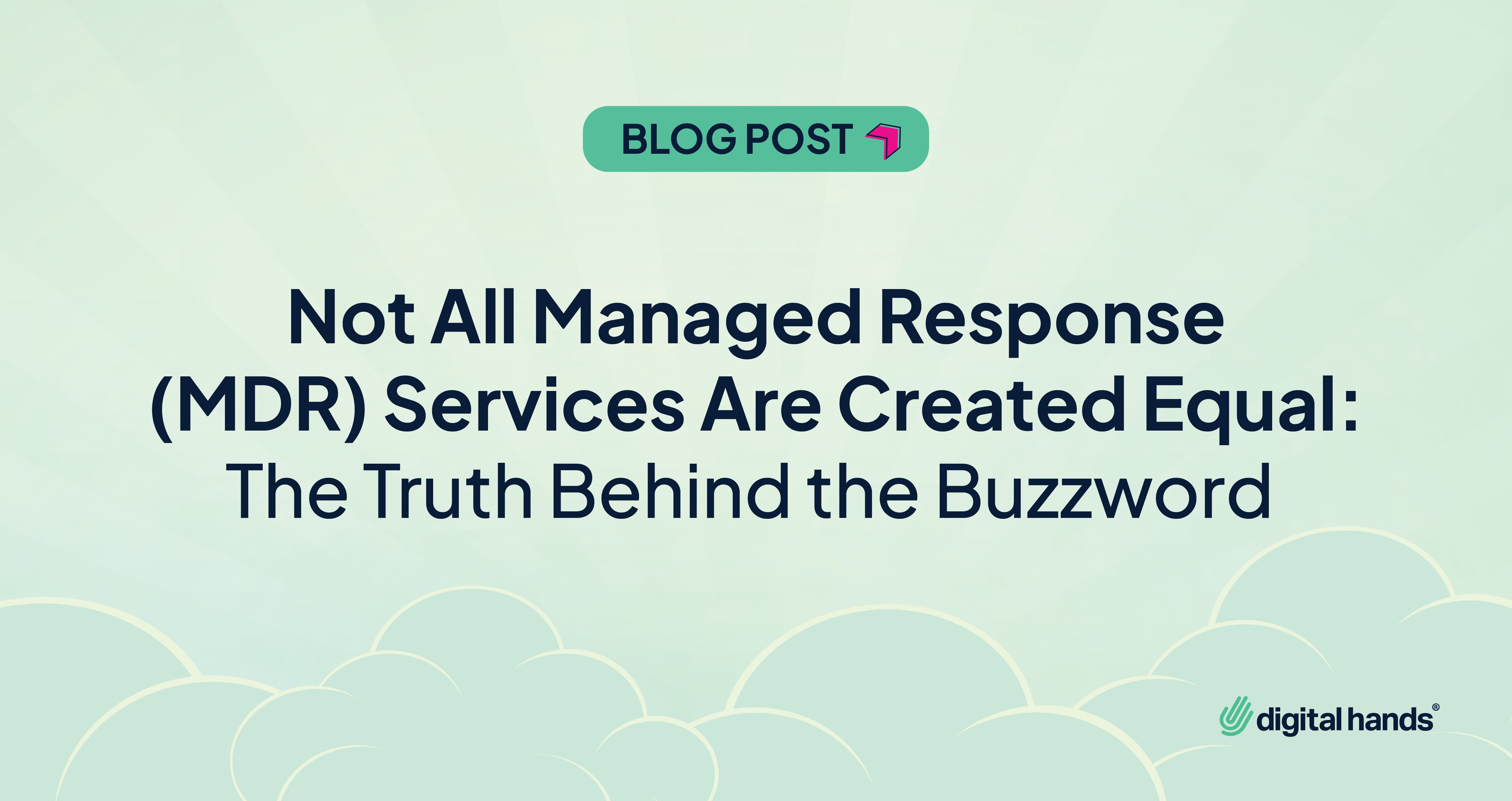
Not All Managed Detection and Response (MDR) Services Are Created Equal: The Truth Behind the Buzzword
Aug 11, 2025 12:28:26 PM | Digital Hands
MDR: From Game-Changer to Buzzword
When MDR first hit the scene, it was designed to solve a very real problem: Security teams were drowning in alerts from SIEMs, EDRs, and other tools, with no time, staff, or context to act on them. MDR promised to combine technology, human expertise, and automated playbooks into a single, managed service that could:
- Continuously monitor for threats
- Actively investigate suspicious activity
- Contain incidents before they spread
- Guide recovery with clear, actionable steps
In short: detection + response = protection.
But as demand skyrocketed, the definition of MDR got fuzzy. Today, “MDR” is stamped on everything from outsourced alert forwarding to EDR add-ons and rebranded MSSP offerings. And while the label stayed the same, the value didn’t.
The Hard Truth: Tools Alone Aren’t Enough
Part of the confusion comes from the way security stacks are built. Most organizations already have:
- SIEM for centralized log analysis
- EDR for endpoint monitoring and containment
- Firewalls for perimeter defense
- SD-WAN for secure connectivity
- Cloud Security controls for hybrid environments
- DNS filtering to block malicious domains
- Email security to stop phishing
- Vulnerability management for patching gaps
These are critical layers — but they’re not a silver bullet. Why?
Because without something (or someone) connecting the dots, they work in silos. Your SIEM might detect a login from Russia. Your EDR might flag suspicious PowerShell activity. Your email security might quarantine a malicious attachment. But without correlation, context, and coordinated action, these signals just stack up as noise.
And here’s the kicker — a lot of MDR providers aren’t doing much more than you already are. They plug into your stack, read the alerts, and forward them to you with a ticket ID. Congratulations: you’ve outsourced your inbox.
The Gap in Most MDRs
Here’s what most “MDR” really looks like under the hood:
- Alert Forwarding Instead of Action – They spot something suspicious, create a ticket, and escalate it to you. Response? That’s your job.
- One-Size-Fits-All Playbooks – Generic workflows that don’t reflect your environment, industry, or risk profile.
- No True Threat Hunting – They wait for alerts instead of actively looking for early signs of compromise.
- Slow-to-Respond SOCs – By the time they engage, the attacker has already made their move. This model leaves you vulnerable when speed is everything. An attacker can escalate privileges, move laterally, and exfiltrate data in hours — sometimes minutes. If your MDR provider is still “investigating” by then, you’re already behind.
What Real MDR Should Be
True MDR isn’t about dashboards, portals, or pretty reports. It’s about outcomes. That means:
- Proactive threat hunting — looking for trouble before it knocks
- Fast detection and faster containment — stopping attacks in their tracks
- Correlation across your entire stack — SIEM, EDR, firewalls, email, cloud, DNS, SD-WAN, everything
- Custom-built playbooks tuned to your environment
- Clear communication — no jargon, no ambiguity, just “Here’s what happened. Here’s what we did. Here’s what’s next.”
It’s not just technology. It’s people, process, and automation working together with one goal: keep you safe without slowing you down.
The Bottom Line
If your MDR provider isn’t hunting threats, integrating your stack, and acting without hesitation, you’re not getting MDR. You’re getting monitoring with better marketing. When it comes to protecting your organization, speed and precision matter more than labels. Because in this business, “good enough” isn’t. And “MDR” shouldn’t just be a checkbox.
Table of Contents
Subscribe to Our Monthly Newsletter
The latest on emerging threats and strategies—straight to your inbox.
By submitting this form, you agree to Digital Hands' Terms of Use and Privacy Policy.
Subscribe to Our Monthly Newsletter
The latest on emerging threats and strategies—straight to your inbox.
By submitting this form, you agree to Digital Hands' Terms of Use and Privacy Policy.



